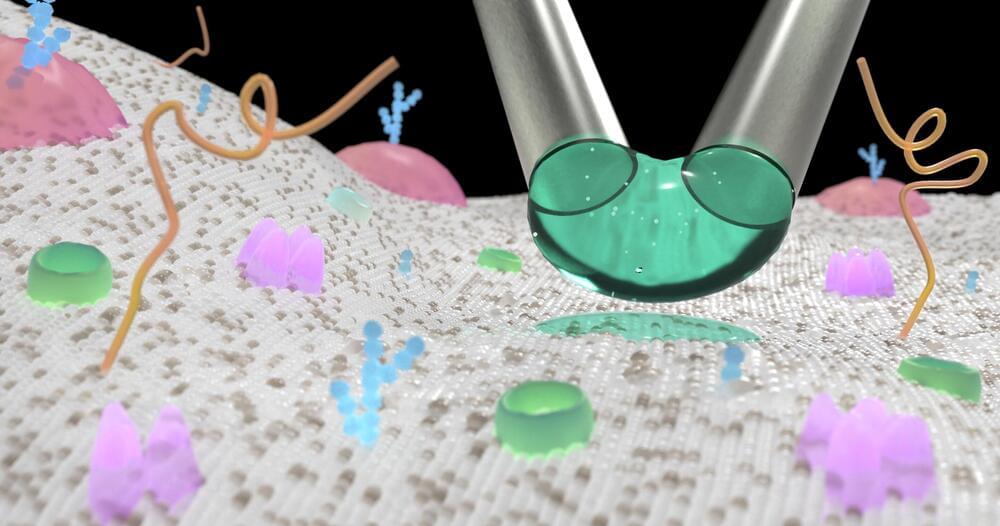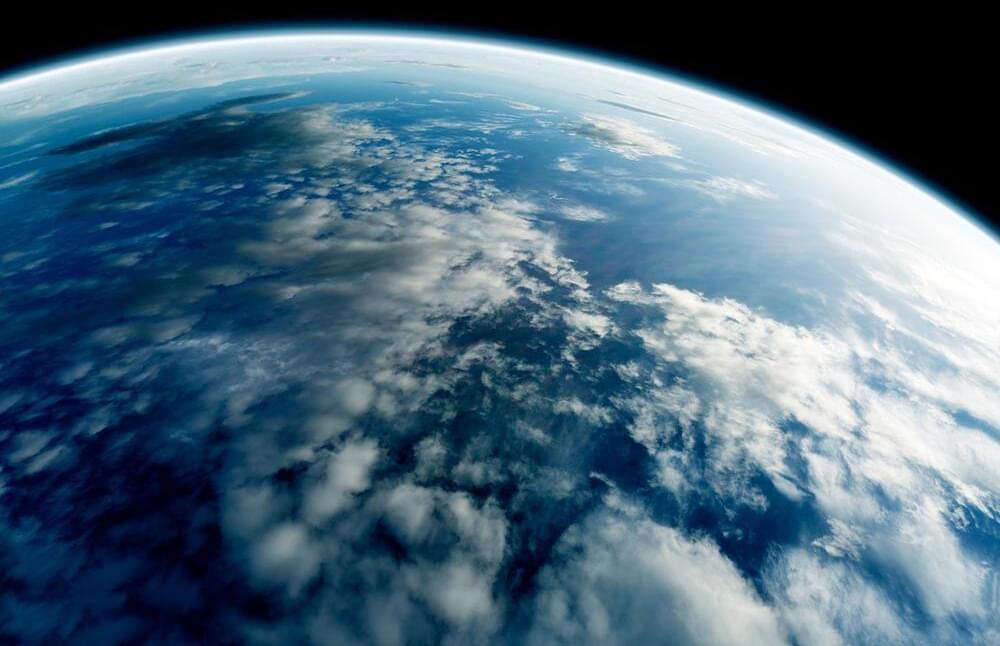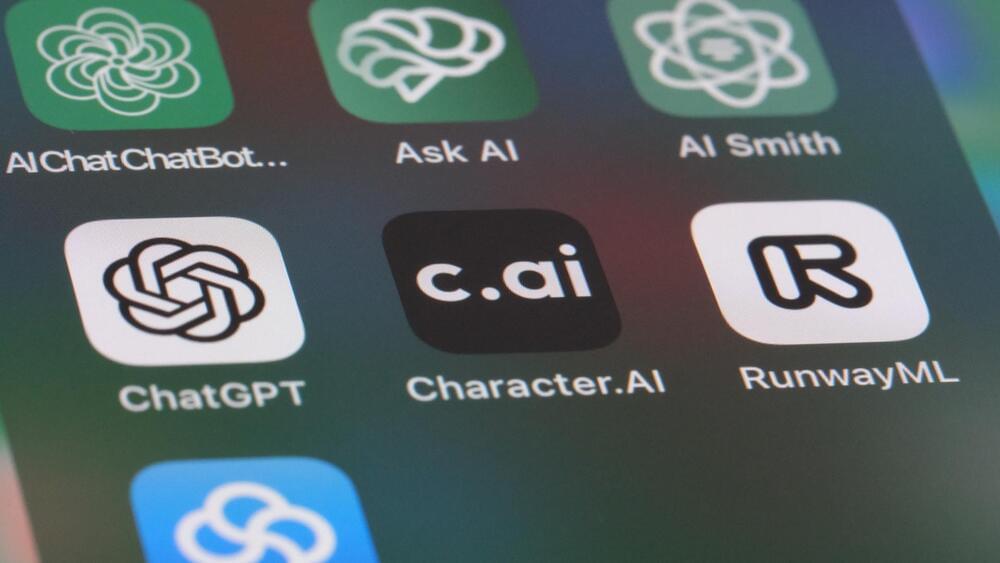Category: biological – Page 88

‘μkiss’: A new method for precision delivery of nanoparticles and small molecules to individual cells
The delivery of experimental materials to individual cells with exactness and exclusivity has long been an elusive and much sought-after ability in biology. With it comes the promise of deciphering many longstanding secrets of the cell.
A research team at the Max-Planck-Zentrum für Physik und Medizin, Erlangen led by Professor Vahid Sandoghdar has now successfully shown how small molecules and single nanoparticles can be applied directly onto the surface of cells.
In the study, which was published in Nature Methods, the scientists describe their technique as a “μkiss” (microkiss)—an easy and cost-effective new method, unlocking new possibilities in single-cell science with a view to-wards next generation therapeutic applications.

Study: A New Force of Nature Is Reshaping the Planet
Drawing together an array of interdisciplinary studies across archaeology, ecology, anthropology, and evolutionary theory, Erle Ellis, professor of geography and environmental systems at the University of Maryland Baltimore County, explains the evolution of the cultural practices that have enabled societies to develop unprecedented capabilities to scale up and transform the ecological systems that sustain them.
From using fire to cook food and manage vegetation to the technologies and institutions that support intensive agriculture, increasingly urbanized societies, and global supply chains stretching across the planet, human societies have evolved the social, cultural, and ecological capabilities to reshape the planet and to thrive in the process.
Ellis is a leading scientist investigating the Anthropocene, the current geological age defined by the human transformation of the planet. He is the founder and director of the Anthroecology Lab, which studies relationships between human societies and ecosystems at local to planetary scales with the aim of guiding more sustainable human relations with the biosphere. He is currently a visiting fellow at the Oxford Martin School, where he recently presented his work on Anthropocene opportunities.
RDW Is A Significant Predictor Of Biological Age: Which Factors May Optimize It?
Join us on Patreon! https://www.patreon.com/MichaelLustgartenPhDDiscount Links: NAD+ Quantification: https://www.jinfiniti.com/intracellular-nad-test/Use Cod…
Time and Quantum Mechanics SOLVED? | Lee Smolin
Lee Smolin joins TOE to discuss his work in theoretical physics, the dynamic nature of the laws of physics and the concept of time.
TIMESTAMPS:
00:00:00 — Intro.
00:04:13 — Doubly Special Relativity and Violation of Lorentz Invariance.
00:09:15 — The Concept of Thick Time.
00:19:11 — Duality Between String Theory and Loop Quantum Gravity.
00:23:50 — Condensed Matter Theory.
00:28:35 — Approximating by a Continuum and Discrete Sets.
00:34:11 — Misapprehensions about Loop Quantum Gravity.
00:38:43 — Defining Complexity and the View of the Universe by One Observer.
00:43:52 — Causal Energetic: The Relationship Between Varieties and Kinetic Energy.
00:48:38 — Varying Parameters in the Universe.
00:53:35 — The Bomes Interpretation of Quantum Mechanics.
00:58:30 — Causality and Relativity.
01:03:15 — Different Styles in Mathematics and Chess.
01:07:55 — The Fundamental Questions in Biology.
01:12:49 — Marrying Outside Your Field.
01:18:04 — Discussion on Authors and Novels.
01:23:35 — Conversations with Fire Robin.
01:28:39 — Being Sincere and Ambitious.
01:33:39 — A Visit from BJ
01:38:34 — Outro.
NOTE: The perspectives expressed by guests don’t necessarily mirror my own. There’s a versicolored arrangement of people on TOE, each harboring distinct viewpoints, as part of my endeavor to understand the perspectives that exist.
THANK YOU: To Mike Duffey for your insight, help, and recommendations on this channel.
Support TOE:
- Patreon: / curtjaimungal (early access to ad-free audio episodes!)
- Crypto: https://tinyurl.com/cryptoTOE
- PayPal: https://tinyurl.com/paypalTOE
- TOE Merch: https://tinyurl.com/TOEmerch.
Follow TOE:

Device physics recipe to make spiking neurons
Divice recipe for making spiking artificial neurons.
Neurons, which are made of biological tissue, exhibit cognitive properties that can be replicated in various material substrates. To create brain-inspired computational artificial systems, we can construct microscopic electronic neurons that mimic natural systems. In this paper, we discuss the essential material and device properties needed for a spiking neuron, which can be characterized using impedance spectroscopy and small perturbation equivalent circuit elements. We find that the minimal neuron system requires a capacitor, a chemical inductor, and a negative resistance. These components can be integrated naturally in the physical response of the device, instead of built from separate circuit elements. We identify the structural conditions for smooth oscillations that depend on certain dynamics of a conducting system with internal state variables. These state variables can be of diverse physical nature, such as properties of fluids, electronic solids, or ionic organic materials, implying that functional neurons can be built in various ways. We highlight the importance of detecting the Hopf bifurcation, a critical point in achieving spiking behavior, through spectral features of the impedance. To this end, we provide a systematic method of analysis in terms of the critical characteristic frequencies that can be obtained from impedance methods. Thus, we propose a methodology to quantify the physical and material properties of devices to produce the dynamic properties of neurons necessary for specific sensory-cognitive tasks. By replicating the essential properties of biological neurons in electronic systems, it may be possible to create brain-inspired computational systems with enhanced capabilities in information processing, pattern recognition, and learning. Additionally, understanding the physical and material properties of neurons can contribute to our knowledge of how biological neurons function and interact in complex neural networks. Overall, this paper presents a novel approach toward building brain-inspired artificial systems and provides insight into the important material and device considerations for achieving spiking behavior in electronic neurons.
SpaceX launches billion-dollar environmental research satellite for NASA
SpaceX launched an environmental research satellite for NASA early Thursday, a nearly $1 billion spacecraft that survived multiple cancellation threats and is now poised to shed new light on climate change and the complex interplay of heat-trapping carbon, aerosols and sea life on global scales.
The Plankton, Aerosol, Cloud, ocean Ecosystem mission — PACE — “will dramatically advance our understanding of the relationship between aerosols and clouds, and the global energy balance,” said Karen St. Germain, director of NASA’s Earth sciences division. “This is one of the biggest sources of uncertainty in our ability to model the climate.”
She said PACE is “going to teach us about the oceans in the same way that Webb (the James Webb Space Telescope) is teaching us about the cosmos.” And that includes “a tremendous amount about ocean biology.”

2054, Part III: The Singularity
“We’d witness advances like mind-uploading,” B.T. said, and described the process by which the knowledge, analytic skills, intelligence, and personality of a person could be uploaded to a computer chip. “Once uploaded, that chip could be fused with a quantum computer that couples biological with artificial intelligence. If you did this, you’d create a human mind that has a level of computational, predictive, analytic, and psychic skill incomprehensibly higher than any existing human mind. You’d have the mind of God. That online intelligence could then create real effects in the physical world. God’s mind is one thing, but what makes God God is that He cometh to earth —”
When B.T. said earth, he made a sweeping gesture, like a faux preacher, and in his excitement, he knocked over Lily’s glass of wine. A waiter promptly appeared with a handful of napkins, sopping up the mess. B.T. waited for the waiter to leave.
“Don’t give me that look.”


Harnessing Native Microbes for Green Roof Soil Health
In this urban rooftop setting, we saw more diversity in the fungal communities of the inoculated soil,” said Dr. Paul Metzler. “The long-term and consistent effects of the inoculum were quite surprising, as it’s not necessarily something you would expect when working with such small microorganisms.
How can urban rooftops, also known as green roofs, be improved to better help the environment? This is what a recent study published in New Phytologist hopes to address as a team of researchers led by Dartmouth College investigated how the right amount of soil microbes on urban rooftops could be used to strengthen urban rooftops. Traditionally, such rooftops use less-than-ideal methods that result in their positive environmental impact reducing over time, including the use of non-native plants in infertile soil. This study holds the potential to help scientists, city planners, and the public better understand the positive environmental impacts of urban rooftops.
For the study, the researchers built their own green roof in Chicago using locally obtained mycorrhizal fungi into the soil to produce an inoculation effect. Studies have shown that mycorrhizal fungi enhance plant life by trading much-needed nutrients to the plants for plant sugar. Over the next two years, the team actively managed the mycorrhizal fungi communities to ascertain their impact on the urban rooftop soil communities, whereas urban rooftops are traditionally passively managed. In the end, the researchers not only found that mycorrhizal fungi provide more robust and diverse soil communities, but they also found that active management was the ideal method for ensuring the mycorrhizal fungi maintain their development, and even accelerates it.